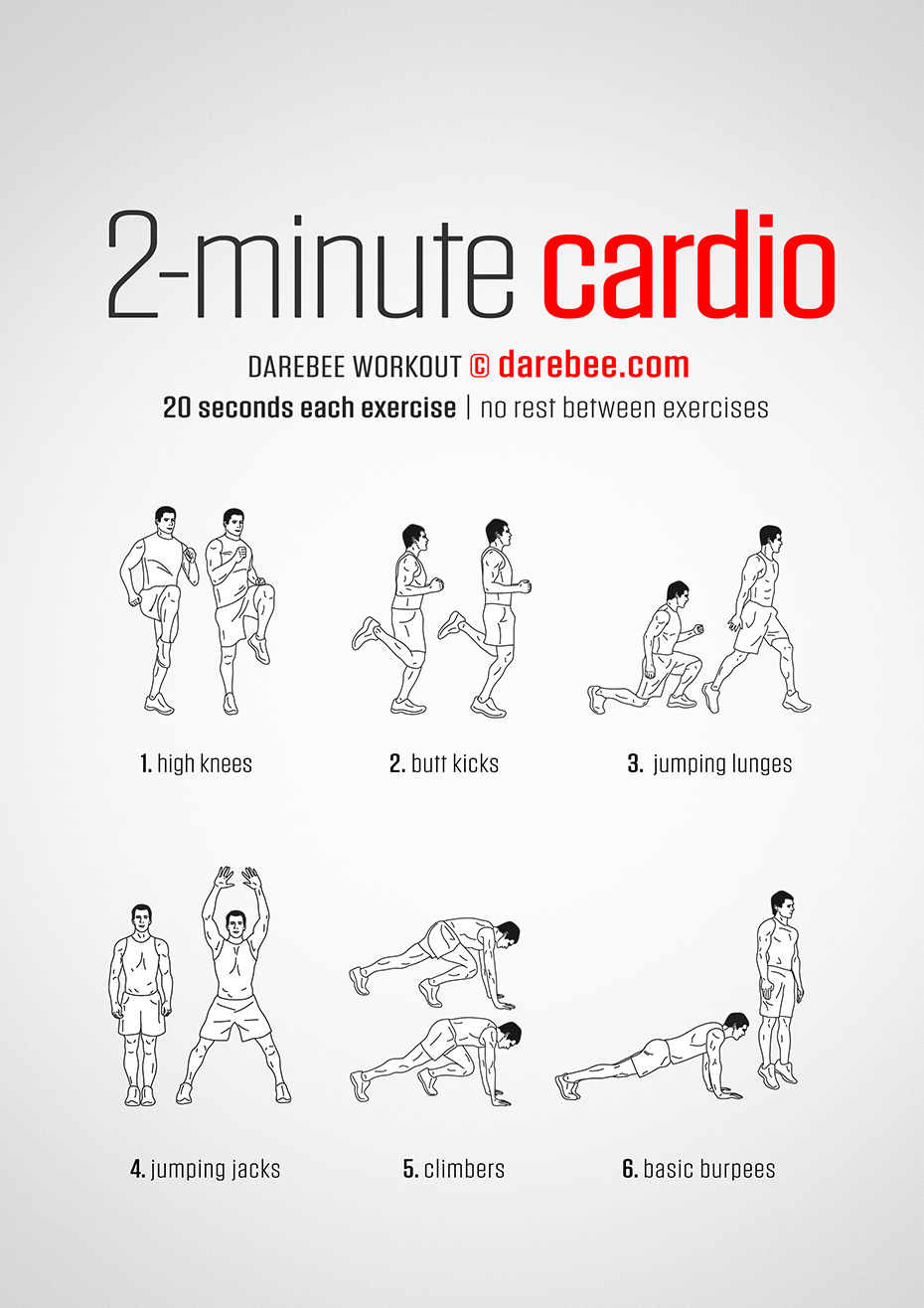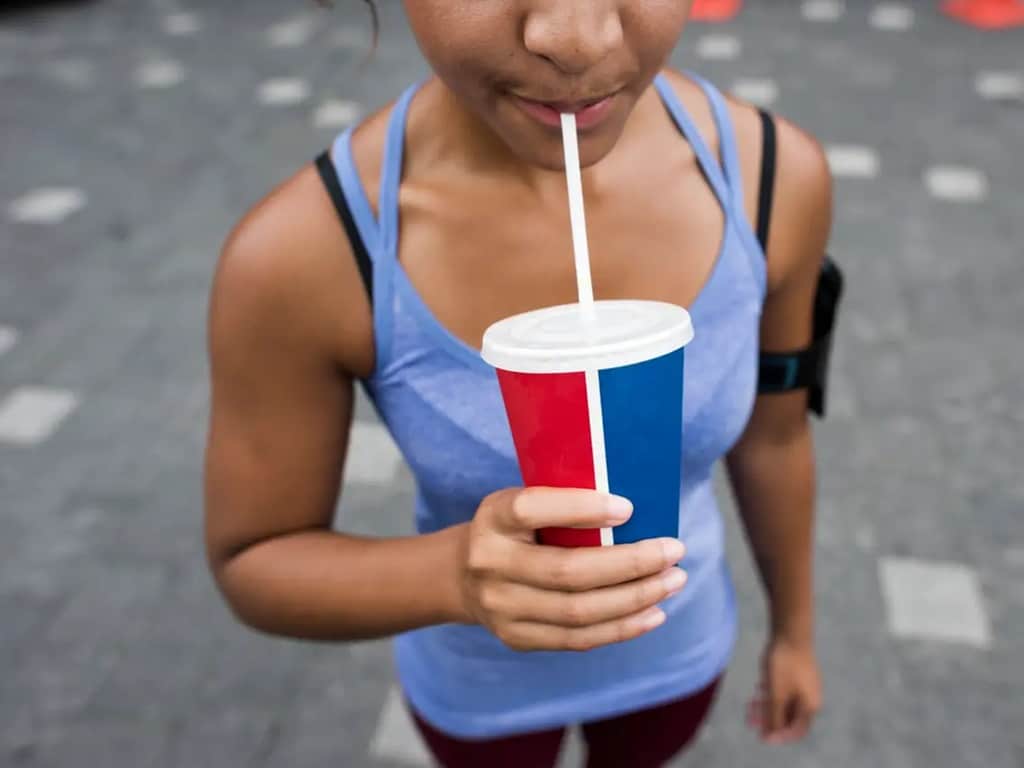Health
7-Day Ultimate Workout Routine For Men: Building Strength And Definition

(CTN NEWS) – Are you looking to build muscle, increase strength, and improve your fitness? Look no further than this ultimate workout routine for men.
Whether you’re just starting or are a seasoned gym-goer, these exercises will challenge your body and help you achieve your fitness goals.
Workout Routine For Men
When building a strong, muscular physique, it’s important to have a well-rounded workout routine that targets all areas of the body.
This includes upper and lower body exercises and a combination of strength training and cardio. This article will outline a comprehensive workout routine to help you build strength, definition, and endurance.
Day 1: Upper Body

Day 1 of our workout routine will focus on the upper body, including the chest, shoulders, back, and arms.
Warm-Up
Before beginning your workout, it’s important to properly warm up your muscles to prevent injury. Begin with 5-10 minutes of light cardio, such as jogging or cycling, followed by dynamic stretching exercises to loosen up your muscles.
Exercise 1: Bench Press (3 sets of 8-10 reps)
The bench press targets the chest, shoulders, and triceps. Begin by lying on a bench with your feet flat on the floor and your hands gripping the barbell slightly wider than shoulder-width apart.
Lower the bar to your chest, then push it back to the starting position.
Exercise 2: Seated Shoulder Press (3 sets of 8-10 reps)
The seated shoulder press targets the shoulders and triceps. Begin by sitting on a bench with a barbell resting on your shoulders. Push the barbell above your head, then lower it to your shoulders.
Exercise 3: Lat Pulldown (3 sets of 8-10 reps)
The lat pulldown targets the back and biceps. Begin by sitting at a lat pulldown machine with your hands gripping the bar slightly wider than shoulder-width apart.
Slowly raise the bar back to its starting position after pulling it down to your chest.
Exercise 4: Bicep Curls (3 sets of 8-10 reps)
Bicep curls target the biceps. Standing shoulder-width apart with a dumbbell in each hand, start by standing with your feet shoulder-width apart.
Curl the dumbbells up to your shoulders, then slowly release them back down to your sides.
Exercise 5: Tricep Dips (3 sets of 8-10 reps)
Tricep dips target the triceps. Begin by sitting on the edge of a bench with your hands gripping the edge behind you. Lower your body towards the floor, then push it back to the starting position.
Day 2: Lower Body

Day 2 of our workout routine will focus on the lower body, including the legs and glutes.
Warm-Up
Before beginning your workout, warm up your muscles with 5-10 minutes of light cardio, followed by some dynamic stretching exercises.
Exercise 1: Squats (3 sets of 8-10 reps)
Squats are a classic lower-body exercise that targets the legs and glutes. Begin by standing with your feet shoulder-width apart and a barbell resting on your shoulders.
Lower your body as if sitting in a chair, then push back up to the starting position.
Exercise 2: Lunges (3 sets of 8-10 reps)
Lunges target the legs and glutes. Standing shoulder-width apart with a dumbbell in each hand, start by standing with your feet shoulder-width apart.
Step forward with one leg, lower your body down, then push back up to the starting position. Repeat with the other leg.
Exercise 3: Deadlifts (3 sets of 8-10 reps)
Deadlifts target the legs, glutes, and lower back. Begin by standing with your feet shoulder-width apart and a barbell resting on the floor before you.
Bend your knees and hips to lift the barbell to your thighs, then lower it back down to the starting position.
Exercise 4: Calf Raises (3 sets of 8-10 reps)
Calf raises target the calves. With a dumbbell in each hand, stand shoulder-width apart. Raise up onto the balls of your feet, then slowly lower back down to the starting position.
Day 3: Cardio

Day 3 of our workout routine will focus on cardio to improve your endurance and overall fitness.
Exercise 1: Running (30 minutes)
Running is a great way to increase your heart rate and burn calories. Begin by running at a comfortable pace for 30 minutes.
Exercise 2: Cycling (30 minutes)
Indoors or outdoors, cycling is another great cardio exercise. Begin by cycling at a comfortable pace for 30 minutes.
Exercise 3: Swimming (30 minutes)
Swimming is a low-impact cardio exercise that is easy on the joints. Begin by swimming laps for 30 minutes.
Day 4: Rest
Giving your body time to rest and recover between workouts is important. Use day 4 as a rest day to allow your muscles to recover and prepare for the next workout.
Day 5: Upper Body

Day 5 of our workout routine will focus on the upper body, including the chest, shoulders, back, and arms.
Warm-Up
Before beginning your workout, warm up your muscles with 5-10 minutes of light cardio, followed by dynamic stretching exercises.
Exercise 1: Bench Press (3 sets of 8-10 repetitions)
The incline bench press targets the upper chest, shoulders, and triceps. Begin by lying on an incline bench with your feet flat on the floor and your hands gripping the barbell slightly wider than shoulder-width apart.
Lower the bar to your upper chest, then push it back to the starting position.
Exercise 2: Dumbbell Flyes (3 sets of 8-10 reps)
Dumbbell flies target the chest and shoulders. Begin by lying on a bench with a dumbbell in each hand. Open your arms to the sides, then bring them above your chest.
Exercise 3: Cable Rows (3 sets of 8-10 reps)
Cable rows target the back and biceps. Begin by standing at a cable machine with your hands gripping the handles. Pull the handles towards your chest, then slowly release them back to the starting position.
Exercise 4: Hammer Curls (3 sets of 8-10 reps)
Hammer curls target the biceps. Standing shoulder-width apart with a dumbbell in each hand, start by standing with your feet shoulder-width apart.
Curl the dumbbells up to your shoulders, then slowly release them back down to your sides.
Exercise 5: Skull Crushers (3 sets of 8-10 reps)
Skull crushers target the triceps. Begin by lying on a bench with a barbell above your head. Lower the barbell down towards your forehead, then push it back up to the starting position.
Day 6: Lower Body

Day 6 of our workout routine will focus on the lower body, including the legs and glutes.
Warm-Up
Before beginning your workout, warm up your muscles with 5-10 minutes of light cardio, followed by some dynamic stretching exercises.
Exercise 1: Squats (3 sets of 8-10 reps)
Squats target the legs, glutes, and core. Begin by standing with your feet shoulder-width apart and a barbell resting on your upper back.
Lower your body as if sitting in a chair, keeping your knees behind your toes, then push back up to the starting position.
Exercise 2: Lunges (3 sets of 8-10 reps)
Lunges target the legs, glutes, and core. With a dumbbell in each hand, stand with your feet hip-width apart.
Step forward with one leg, lowering your body until your knee is bent at a 90-degree angle, then push back up to the starting position and repeat with the other leg.
Exercise 3: Leg Press (3 sets of 8-10 reps)
The leg press targets the legs and glutes. Begin by sitting in a leg press machine with your feet on the platform. Push the platform away from your body, then slowly release it to the starting position.
Exercise 4: Glute Bridges (3 sets of 8-10 reps)
Glute bridges target the glutes and core. Lie on your back with your knees bent and your feet flat.
Lift your hips towards the ceiling, then slowly release them back down to the starting position.
Day 7: Rest
Use day 7 as a rest day to allow your muscles to recover and prepare for the next week’s workouts.
Conclusion
A well-rounded workout routine is key to achieving your fitness goals.
Combining strength training and cardio exercises will help you build muscle, burn fat, and improve your overall health and fitness.
Remember to warm up before each workout and give your body time to rest and recover between workouts.
RELATED CTN NEWS:
FDA Requires Reports On Mammograms To Include Breast Density Data
Health
Report Causes Pfizer Stock to Climb Approximately $1 Billion Acquired by Starboard

(VOR News) – According to a rumor that activist investor Pfizer Starboard Value has taken a holding in the struggling pharmaceutical business that is expected to be worth around one billion dollars, the stock of Pfizer (PFE) is on the increase in premarket trading on Monday.
This comes after the report was made public. The report was made available to the general public following this. Starboard Value was successful in moving forward with the acquisition of the position.
Starboard is said to have approached Ian Read, a former chief executive officer of Pfizer, and Frank D’Amelio, a former chief financial officer, in order to seek assistance with its goals of boosting the performance of the company, according to the Wall Street Journal. Read and D’Amelio are both former Pfizer executives.
The purpose of this is to facilitate the accomplishment of its objectives, which include enhancing the overall performance of the firm.
In their previous jobs, D’Amelio and Read were chief financial officers.
It is stated in the report that the hedge fund is of the opinion that Pfizer, which is currently being managed by Albert Bourla, who succeeded Read as Chief Executive Officer (CEO) in 2019, does not demonstrate the same level of mergers and acquisitions (M&A) discipline that Read did. Bourla took over for Read in 2019. Read was succeeded by Bourla in the year 2019.
Pfizer, a multinational pharmaceutical conglomerate, has made substantial investments in the acquisition of more companies that are involved in the research and development of cancer medicines.
These businesses have been acquired for billions of dollars. The biotechnology company Seagen, which was acquired by Pfizer in the previous year for a price of $43 billion, is included in this category. One of the businesses that can be classified as belonging to this category is Seagen.
In spite of the fact that the S&P 500 Index experienced a 21% increase in 2024.
No major trading occurred in Pfizer stock that year.
Due to the fact that the demand for Pfizer’s COVID-19 vaccines fell after the firm reached its pandemic peak in 2021, the share price of the corporation has decreased by over fifty percent since that time.
This drop has occurred ever since the company’s shares reached their maximum peak, which was during the time that this decline occurred. Not only have they not changed at all, but they have also remained essentially stable. This is in contrast to the S&P 500, which has gained 21% since the beginning of this year.
Recently, the corporation was forced to take a hit when it decided to recall all of the sickle cell illness medications that it had distributed all over the world.
Fears that the prescription could lead patients to experience severe agony and possibly even death were the impetus for the decision to recall the product. In spite of the fact that Pfizer’s stock is increasing by almost three percent as a result of the news that followed the company’s decision, this is the circumstance that has come about.
SOURCE: IPN
SEE ALSO:
New Study Reveals Drinking Soda Pop Increases the Risk of Stroke
The Mpox Vaccine’s Protection Decreases Within a Year; Booster Requirements
Health
New Study Reveals Drinking Soda Pop Increases the Risk of Stroke

A recent report from global research indicates that excessive consumption of coffee or soda pop is associated with an increased risk of stroke, although the intake of black and green tea is correlated with a reduced risk. Excessive consumption of soda pop or coffee warrants caution!
Recent research indicates that it may substantially elevate the risk of stroke.
Consuming four cups of coffee daily elevates the risk of stroke, according to studies, although ingesting 3-4 cups of black or green tea daily typically offers protection against stroke. Additionally, consume more coffee; it may reduce your risk of mortality.
Recent findings from global research studies co-led by the University of Galway and McMaster University, alongside an international consortium of stroke researchers, indicate that soda, encompassing both sugar-sweetened and artificially sweetened variants such as diet or zero sugar, is associated with a 22 percent heightened risk of stroke. The risk escalated significantly with the consumption of two or more of these beverages daily.
Stroke Risk Fizzy Drinks and Soda Pop
The correlation between fizzy drinks consumption and stroke risk was most pronounced in Europe, the Middle East, Africa, and South America. Women exhibit the most elevated risk of stroke from bleeding (intracranial hemorrhage) associated with fruit juice beverages. Consuming over 7 cups of water daily diminishes the likelihood of stroke due to a clot.
Researchers observed that numerous items advertised as fruit juice are derived from concentrates and have added sugars and preservatives, potentially negating the advantages often associated with fresh fruit and instead elevating stroke risk.
Fruit juice beverages were associated with a 37 percent heightened risk of stroke resulting from bleeding (intracranial hemorrhage). Consuming two of these beverages daily increases the risk thrice.
Consuming over four cups of coffee daily elevates the risk of stroke by 37 percent, although lower consumption levels do not correlate with stroke risk. Conversely, tea consumption was associated with an 18-20 percent reduction in stroke risk. Additionally, consuming 3-4 cups daily of black tea, such as Breakfast and Earl Grey varieties, excluding green and herbal teas, was associated with a 29 percent reduced risk of stroke.
Consuming 3-4 cups of green tea daily was associated with a 27 percent reduction in stroke risk. Notably, the addition of milk may diminish or inhibit the advantageous effects of antioxidants present in tea. The lower risk of stroke associated with tea consumption was negated for individuals who added milk.
Disclaimer: This article is intended solely for informational reasons and should not be considered a replacement for professional medical counsel. Consistently consult your physician regarding any inquiries pertaining to a medical problem.
Related News:
Starbucks Faces Sales Decline Amid Price Fatigue and Rising Competition
Starbucks Faces Sales Decline Amid Price Fatigue and Rising Competition
Health
Following a Diagnosis of Breast Cancer, What Else Should You Know?

(VOR News) – Even though breast cancer affects one in eight American women, receiving a diagnosis can make a woman feel isolated.
Experts in breast cancer from the American College of Physicians (ACS) advise patients on how to manage their disease so that they may better cope with this awful information.
First, the kind and stage of breast cancer dictates the course of your care.
In addition to immunotherapy and chemotherapy, there are various surgical options available for the treatment of breast cancer.
Women of African descent are disproportionately affected by triple-negative breast cancer, an extremely aggressive form of the disease that has never proven easy to treat.
According to the American Cancer Society, pembrolizumab (Keytruda), an immunotherapy, has been shown to be helpful when combined with chemotherapy and is currently the recommended course of treatment for certain combinations of triple-negative breast cancer.
In her presentation, Dr. Katharine Yao said, “It’s really important that the patient and physician discuss the patient’s preferences and values when deciding what type of treatment to pursue and that they have an honest, individualized discussion with their care team.”
She is currently responsible for developing breast cancer treatment recommendations for more than 575 hospitals and institutions nationwide in her role as chair of the American College of Surgeons’ National Accreditation Program for Breast Institutions (NAPBC).
Yao, vice chair of research at Endeavor Health NorthShore Hospitals in New York, pointed out that each decision made about a patient’s treatment plan should take her preferences and diagnosis into consideration.
She ought to think about whether she would prefer a mastectomy—a surgical procedure that involves removing the entire breast with or without reconstruction—or a lumpectomy, which involves a surgical procedure that spares part of the breast tissue.
She stated that “the breast cancer you have may be very different from the breast cancer you hear about in your neighbor, colleague, or friend” in a press release issued by the American Cancer Society (ACS).
“Consider that while discussing breast cancer with others.”
Throughout your journey, it is critical that you look after your emotional health because having breast cancer may have a detrimental impact on your mental health.
“Getting a cancer diagnosis does not mean that everything in your life stops to be normal.” Director of the Fellowship in the Diseases of the Breast program at the Winthrop P. Rockefeller Cancer Institute at the University of Arkansas and state head of the American Cancer Society Commission on Cancer for Arkansas, Dr. Daniela Ochoa She thinks adding the burden of a cancer diagnosis and treatment to all the other pressures in life may be taxing.
“Managing stress and emotional health is vital component of a treatment plan.”
Ochoa recommends clinically trained psychologists and social workers who have assisted people in coping with cancer to anyone receiving treatment. Learning coping techniques might also be facilitated by joining cancer support groups or cancer wellness initiatives.
Breast cancer specialists say your care team is crucial.
The American Cancer Society (ACS) defines comprehensive care as having support at every stage of the procedure from surgeons, oncologists, patient navigators, nurses, social workers, psychologists, and other specialists.
After receiving a breast cancer diagnosis, women should see a surgeon or medical oncologist to explore their options; nevertheless, treatment shouldn’t be discontinued after just one appointment or after surgery is over.
Additionally, you can ask trustworthy friends or family members to accompany you to appointments and aid you with research or notes. They could serve as a network of support for you.
Yao stated in his talk that “one of the most important things is that patients should search out a team they have confidence in, that they trust will have their back when they need it, and a team they feel they can get access to and that will help them when they are in need.”
SOURCE: MP
SEE ALSO:
The Mpox Vaccine’s Protection Decreases Within a Year; Booster Requirements
COVID was a Paradigm Shift in Health Policymaking, Says Commissioner Stella Kyriakides.
Rwanda Reports 8 Deaths Linked To Ebola-Like Marburg Virus Days After It Declared An Outbreak
-

 News3 years ago
News3 years agoLet’s Know About Ultra High Net Worth Individual
-
Entertainment2 years ago
Mabelle Prior: The Voice of Hope, Resilience, and Diversity Inspiring Generations
-

 Health3 years ago
Health3 years agoHow Much Ivermectin Should You Take?
-

 Tech2 years ago
Tech2 years agoTop Forex Brokers of 2023: Reviews and Analysis for Successful Trading
-

 Lifestyles2 years ago
Lifestyles2 years agoAries Soulmate Signs
-

 Movies2 years ago
Movies2 years agoWhat Should I Do If Disney Plus Keeps Logging Me Out of TV?
-

 Health3 years ago
Health3 years agoCan I Buy Ivermectin Without A Prescription in the USA?
-

 Learning2 years ago
Learning2 years agoVirtual Numbers: What Are They For?
